3 Ways to Train for Winter
If you want to make the most of the ski season, train like the pros.
If you only ski 30 days or fewer a year, do you really want to spend part of that time on snow just getting in shape? We thought not. More and more athletes are finding creative ways to build up their ski muscles long before the snow hits the ground. Here are three ways top skiers get in shape without going to a gym.
Rollerskiing is on a Roll
Before Covid-19, each August some of the country’s best Nordic skiers gathered on Route 17 in Waitsfield to compete in the 11th annual App Gap Challenge, a grueling rollerski up one of the steepest roads in Vermont. The brainchild of Green Mountain Valley School coach Justin Beckwith, the race set men on a 7,500-meter climb (and women on a 5,000-meter climb) up the Gap with a transition from skate roller skis to classic at the parking lot of Mad River Glen. In 2017, the women’s race looked almost like an Olympic trial with Caitlin Patterson leading fellow U.S. Ski Teamers Ida Sargent, Katherine Ogden and Sophie Caldwell. “This is easily the hardest race I’ve ever done,” said Caldwell after the race.
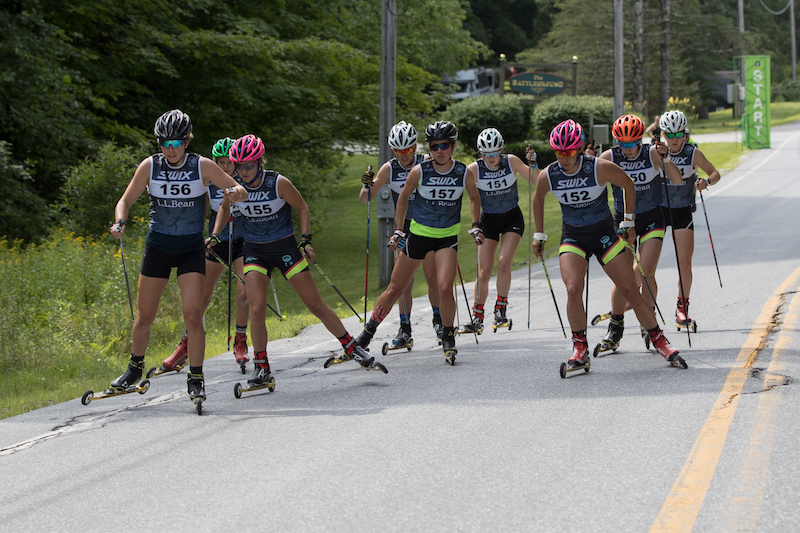
Rollerskiing has, increasingly, become the go-to training sport for anyone who wants to build Nordic skiing endurance and skills. “It really approximates Nordic skiing and it’s a great workout for your legs, core and arms,” says Reese Brown, former press officer for U.S. Ski and Snowboard’s Nordic team. “It’s even catching on in Texas where there are some clubs where the majority of the roller ski racers never ski.”
While it’s not an easy sport to learn, (the skis have “speed reducers” but no real brakes and you need a road with a shoulder wide enough to skate and pole) Brown says it’s a great workout for alpine skiers too. “You really learn balance and it builds your leg strength, but it’s gentle on your body and you just can’t get into the back seat.”
And if you want to try it yourself, Skirack sells both classic and skate skis from Swenor and V2 for about $300 a pair.
Burlington Goes In-Line
Myles Cotter-Sparrow has been inline skating since he was a junior alpine racer. “I really got into it for training,” he says. Cotter-Sparrow, whose parents started the Zero Gravity skate park in Rutland, now works for Rollerblade and is working on a re-release of the 1990s classic Skate to Ski training videos. Rollerblade has also been hosting clinics around the country for PSIA instructors, showing how skating can help improve skiing technique.
“It’s a great workout because it builds up the stabilizing muscles, like your gluteus minimus, works your core and keeps you balanced. It can also really help to use endurance.” Ski academies, Green Mountain School, Carrabassett Valley Academy and Proctor Academy all use inline skating as training now, says Cotter-Sparrow.
“I’d love to see Vermont get races going like the marathon in Duluth, Minn., which draws 1,000 inline skaters, or get an inline division in the Burlington City Marathon,” he says.
DIY Sled Training
When alpine and Nordic ski racers at Middlebury College want to build strength, they often talked with Chris McKhann. McKhann, who was a Division 1 ski racer at Harvard, until recently serced as Middlebury’s strength and conditioning coach. His secret weapon, he says, is sled training.
“One of the biggest issues people have is that it’s easy to get hurt in the weight room. Sleds are super easy to teach and incredibly safe. There’s no eccentric loading. When you do a squat you are putting the weight on your low back and knees. With sleds, there’s no lowering of the weight. You don’t have the same strain on the muscles and ligaments, so there’s no soreness.” More and more top skiers and riders are using sled training to build power, including Mikaela Shiffrin, Shaun White and downhiller Breezy Johnson.
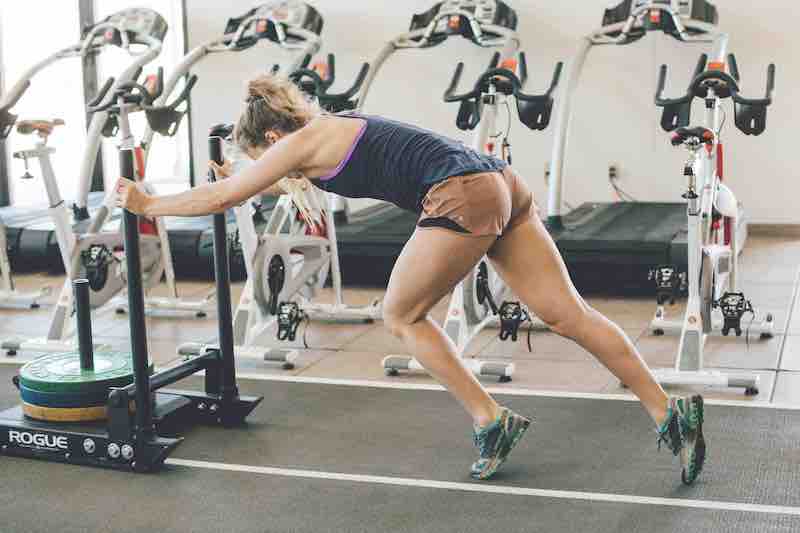
“A lateral drive is one of the best things skiers can do because it works stabilizing muscles you often don’t get to,” says McKhann, referring to the exercise where you pull a sled as you cross-step sideways. With “presses” you hold the straps in front with your arms bent at 90 degrees and with pulls your arms are behind you. (for a series of videos and workouts see vtskiandride.com)
The other beauty of sled training is you don’t need a gym to do it. You can buy a sled for $100 or you can build one yourself with an old tire, a strap and a cinder block for $15 and work out outside.”
McKhann, 46, has come out with a new video series that shows various training programs on his website, SledRX.com. He recommends doing a “power day” of reps where you pull 80 percent of your body weight, followed by a strength day with 100 to 200 percent of your weight. Pulling the sled laterally builds the lateral strength needed to set and hold an edge.
As for how you add weight? “I like to put a couple of small children in the tire and tow them around. They love it and I get a great workout,” McKhann says.

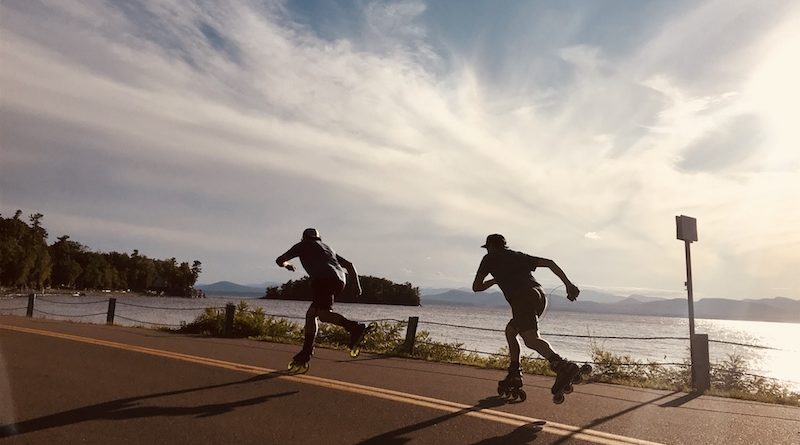
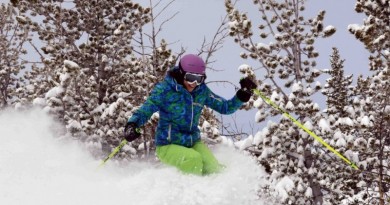
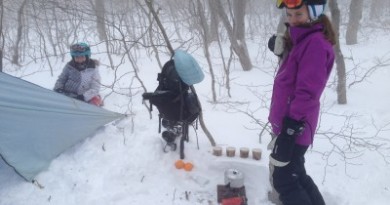
Pingback: vtskiandride.com: